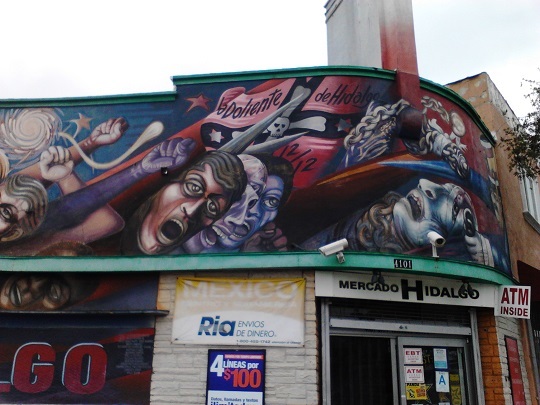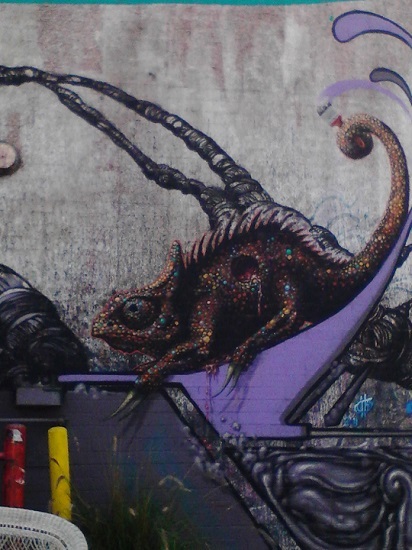After a decade-long moratorium on public mural painting, the City of Los Angeles has finally reached a consensus to lift the ban. The perennial debate between city council members, non-profit organizations, attorneys, artists, residents, and other stakeholders, has ended in somewhat of a victory for artists who have continuously maintained that mural painting has been a rich tradition in the city, which was once considered mural capital of the world. One of the leading councilman to put forward the new regulations was Jose Huizar, who declared that commercial messages were prohibited and that murals must remain in place for at least two years. Residential neighborhoods have the opportunity to "opt in" to the new regulations, however, painting murals on single-family homes has become illegal. It is a contradiction of sorts, but a compromise that city council members reached based on their constituents' influence.
One artist who played an instrument role in lifting the ban was Willie Herron, a Chicano muralist who grew up in East Los Angeles and studied at Otis College and the Art Center College of Design. Many of his work dates back to the 70's and can still be found in City Terrace, an unincorporated community of the city of Los Angeles, adjacent to CSU Los Angeles and Boyle Heights. Just a few days ago I went to see his work in person and found masterpieces reminiscent of Siqueiros and Orozco. In the center of the mural is a portrait of Miguel Hidalgo y Costilla, a Mexican priest and leader of the War of Mexican Independence, also known for his famous "Grito de Dolores," a call to arms which marked the beginning of the war. In the mural you can see people surrounded by darkness accepting the call and rising in revolt, and it reminds one of the famous mural with a similar theme in the Governor's Palace in Guadalajara, 1937, by Jose Clemente Orozco. On a different panel of Herron's piece, you can see brighter colors symbolic of looking forward to a brighter future with progress around. You can see an image of a bullet train in art deco-like, streamline moderne fashion with people looking in a different direction and moving forward in a more humanistic position. It is reminiscent of a piece done at the UNAM University by Siqueiros, which symbolizes progress and the future, and a university for the people, and the people for a university.
These types of murals exist all across the city and county of Los Angeles. From San Pedro and Long Beach, to South Los Angeles and the Westside, to the San Fernando Valley, through Northeast Los Angeles and Downtown, through East Los Angeles and freeway infrastructures, on commercial buildings and billboards, on illegal street art yards, and on your local grocery stores and mercados, you are sure to find murals depicting the trajectory of the people, evolutionary change, cultural and individual symbolism, and many other types of expressionism where the medium is the message. Once such group of artists has taken traditional murals and infused their own ideas and interpretation of the changes within the ecology of the environment and the fractured ecosystem, using mediums of painting, fine art, murals, graffiti, and biology. UGLAR, which stands for United Group of Los Angeles Residents has begun to do something completely radical within the scope of muralism, thus bringing about a juxtaposition between people and their relationship with the landscape and water, as a way of also examining the relationship between the flora and fauna of the region simultaneously. Below we can observe a beautiful and brightly-colored chameleon who's scales match the palate of the wall sitting on a riverbed riding the wave of creation. The piece is part of a larger diagram that conveys the evolutionary process of art as it pays homage to other artists that paved the way, while demonstrating the change and beauty that is still forthcoming. We can expect to see much more from this dynamic collaborative. For more info see: http://uglarworks.com/

